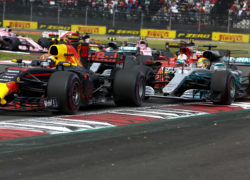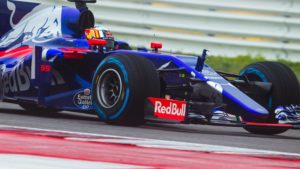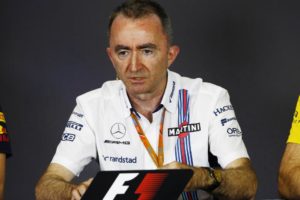
2018 is here and it brings with it the prospect of a new Formula 1 season. Though there is no great change in regulations the modifications for the 2018 season could still have a significant impact.
Aesthetically there is good news and bad news for the 2018 cars. The good news is that the T-wings and shark-fins will no longer feature thanks to a tweak of the aero rules. Like it or loathe it the halo head protection system is coming in 2018. There’s little doubt that the halo will make a significant visual impact to F1 but it’s not the only impact it will have. The two other factors that will have been giving several designers prolonged headaches is the effect it will have on aero performance and the weight addition. While the FIA has added 6kgs to the overall weight limit of the cars rumours are that the halo comes in at around 15kgs. This will likely force teams into trimming weight in other areas of the car.
One of the more preposterous rules for 2018 is the limiting to three power units for the entire 21-race season. It means that each engine will now have to last seven races. This, in the name of cost saving, means manufactures will need to balance reliability and performance on a knife-edge. With only three engines its likely inevitable that all teams will incur grid penalties at some point, including the frontrunners. The irony of it all is that money wont be saved on power units. Spare engines, gearboxes, turbos, etc. are manufactured and carted around the world anyway which means that no money is being saved. Instead the manner in which teams and drivers, and fans for that matter, pay is with absurd grid penalties.
 Toro Rosso in particular will be hoping that Honda has solved its woeful reliability record as it starts its partnership with the Japanese manufacturer in 2018. While Honda’s performance saw a slight upturn with McLaren in the latter half of the 2017 season they still have a long way to go to catch up to Renault let alone Mercedes and Ferrari. The Honda partnership does make Toro Rosso a de facto works team, which means a plethora of perks, including a more than tidy injection of cash.
Toro Rosso in particular will be hoping that Honda has solved its woeful reliability record as it starts its partnership with the Japanese manufacturer in 2018. While Honda’s performance saw a slight upturn with McLaren in the latter half of the 2017 season they still have a long way to go to catch up to Renault let alone Mercedes and Ferrari. The Honda partnership does make Toro Rosso a de facto works team, which means a plethora of perks, including a more than tidy injection of cash.
Elsewhere, McLaren and Fernando Alonso will be hoping that Renault has solved its own reliability issues that marred the end of the 2017 season. There is great expectation that bolting the Renault into the back of the McLaren will push it up the grid. How far they’ll progress remains to be seen. Sauber too are looking to recover from one of the worst season on record. They’ll be doing so with the signing of F2, formerly GP2, champion and Ferrari Academy driver Charles le Clerc. Despite jumping into the high-pressure cauldron of F1 there is high expectations for le Clerc who is considered one of the best young drivers.
Another boost to Sauber’s 2018 bid is a new technical and commercial partnership with Alfa Romeo. While the car will be decked out in Alfa red the link up also means access to Ferrari’s latest power units.
 The Williams team has announced Sergey Sirotkin alongside Lance Stroll in their 2018 car. While Robert Kubica returns to F1 as the reserve and development driver for the team. It’s a big year for Williams as Paddy Lowe can begin to make the sort of impact the team needs to move forward. The question remains whether the team’s inexperienced driver line-up will be equal to the task. If not, someone like Romain Grosjean could well be lined up for 2019.
The Williams team has announced Sergey Sirotkin alongside Lance Stroll in their 2018 car. While Robert Kubica returns to F1 as the reserve and development driver for the team. It’s a big year for Williams as Paddy Lowe can begin to make the sort of impact the team needs to move forward. The question remains whether the team’s inexperienced driver line-up will be equal to the task. If not, someone like Romain Grosjean could well be lined up for 2019.
With all of this there are still many more scenarios, issues, permutations, and speculations for the new season. Will Mercedes be able to hold off Ferrari and perhaps even Red Bull? What of the intra-team battle between Max Verstappen and Daniel Ricciardo? How far can McLaren go with Renault power? What impact will Pirelli’s remodeled tyres have on track?


